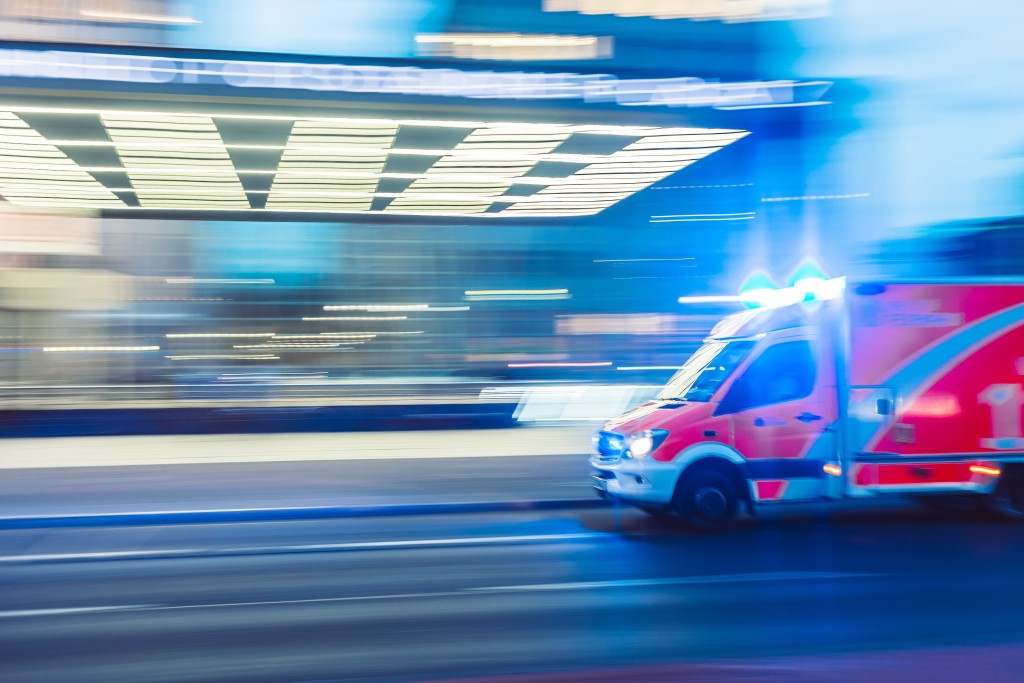My wife and I were both ill with the symptoms of COVID-19. While we were ill, we were looking for information about other people’s experience of COVID to understand how our symptoms could evolve. This is our experience, and this blog is written both by Tram Anh and me.
The context
We live in London, and are co-founders of the Centre for Finance, Technology and Entrepreneurship. Through our normal activities, we usually meet a lot of people every day.
However, because we have offices in Singapore and Hong Kong, we realised the seriousness of COVID very early on, and we knew that for a young company like ours, it could be hugely disruptive if a part of the team fell ill. A month ago, we therefore implemented our Business Continuity Plan for CFTE with the following measures:
- Split the London team – and the management – in 3 different locations to make sure that a part of the management could continue to run the company if others were ill. Since Tram Anh and I are husband and wife, we would of course work in the same place
- Decrease social interactions, and move physical meetings to videoconference when possible
- Use hand sanitiser, stop sharing food in the office, stop hugging (which is a big thing at CFTE!)
- Be healthy (sleep, food, vitamins) to avoid being ill (not just COVID, but any illness), because this is not a period where you want to be ill
Being in London, we knew however that our risk was still high – compared to Asia where people wear masks and have the experience of SARS – but we wanted at least to decrease the risk to the team, and limit the contagion risk.
Despite our precautions, I fell ill, then 2 days after Tram Anh fell ill.
My symptoms (Huy)
- Day 1: in the morning, we were filming one of our Senior Lecturers for a new course. This is always intense, but nothing out of the ordinary. We then had lunch, and he left. I felt a bit tired, so decided to go home at 4pm to avoid the rush hour in the Tube. An hour later, when I reached home, I was exhausted. I had some fever (38.2C), but especially a very high heart rate (120 beats per minute vs 70 usually). My respiratory rate was normal (16 per minute) and SPO2 too (98%). I drank a lot of water and went to sleep
- Day 2: still fever around 38. Heart rate above 100, I slept 18 hours. I tried to have normal food, with a lot of water.
- Day 3: still fever around 38. Heart rate above 100, I continued to sleep + normal food and water
- Day 4: no more temperature, I still felt a bit tired, but nothing too concerning, apart from my heart rate that was a bit high (around 100).
- Day 5: temperature went up again to 38.5, heart rate above 100, and I had body aches for the first time. I took 500mg of paracetamol, and went back to sleep.
- Day 6: same
- Day 7: temperature back to normal, heart rate a bit high
- Day 8 and after: everything normal, the heart rate was a bit high, but then went back to normal.
Overall, I was tired with fever, but it wasn’t too serious. I still don’t know if it was COVID19. We called 111, and it was clear that only people who had been to high risk countries such as Italy or Iran, or were suffering from respiratory distress, would be tested. I was therefore not tested, and this is when I realised that the numbers in the UK were likely to be much much higher than reported.
My symptoms (Tram Anh)
Because Huy has had asthma since young, and because COVID19 is a respiratory disease, we thought that he was the one in the family who was most at risk of complications. I didn’t imagine I would be the one who who would have much more severe symptoms.
2 days after Huy got his symptoms, I started to feel ill too.
- Day 1: when I woke up, I had a fever of 38.5. I also had a dry cough. By then, we were used to monitoring Huy’s symptoms, and we measured mine which were high (110 heart rate, 18 respiratory rate, 95 SPO2). I was extremely tired, and I had some food, water, and 500mg paracetamol, and went back to sleep.
- Day 2: same
- Day 3: same
- Day 4: same. I was still extremely tired, and Huy made sure that I ate enough and had enough water / orange juice, and I just slept the whole day. During all these days, my temperature was around 38C
- Day 5: Huy was talking to me and I felt very lightheaded, and couldn’t focus on what he said. I was extremely tired, and started to have difficulty breathing. We checked my temperature that had shot up to 39.5C and my respiratory rate was very high (25 per minute). Huy gave me 1g of Paracetamol and called directly 999. The ambulance came 2 hours later, and they monitored me. Thanks to the paracetamol, my temperature had gone down to 38, and my respiratory rate to 20, with my heart rate above 100. I wasn’t tested for COVID – although they said it was likely – and I was given antibiotics in case it was a bacterial infection.
- Day 6: temperature above 39, I took 1g of paracetamol every 6 hours, and the temperature went down to 38 after this
- Day 7: My temperature went back up to 39.5, I was coughing much more and had difficulty breathing again. I became extremely weak and semi-conscious. Huy gave me 1g of paracetamol immediately and called 999 again. When the ambulance arrived a couple of hours later, my temperature had gone down, but my heart rate was still very high, and they decided to bring me to the hospital. There was a special section to check people with the Coronavirus, and they took a sample of my blood, did an electrocardiogram and an X-ray of my lungs. My blood results showed that I had something (but we didn’t know if it was COVID since they didn’t test for COVID) and my X-ray was normal. They decided not to keep me so that I could better recover at home and not to be more exposed. I left the hospital in the middle of the night.
- Day 8: temperature of 39, I continued to take paracetamol
- Day 9: suddenly, my temperature went back to normal at 37
- Day 10: Still tired, but apart from the cough, everything else is normal
- Day 11: normal, still coughing
- Day 12 : normal, still coughing
- Day 13: normal, still coughing
Despite Huy being the “highest risk” person in the family because of his asthma, his symptoms were quite mild. On the other hand, I am normally quite healthy and would be considered “low risk”, and I had much more severe symptoms. This is the first time we had to call the ambulance for me (let alone two times), and there were very stressful moments when I was semi-conscious and could hardly breathe.
Our experience of COVID19 (Huy)
During the last 2 weeks, I spent quite a bit of time reading about the symptoms of COVID, and it seems that the most dangerous period seems to be around 1 week – which is what Tram Anh experienced.
Although Tram Anh is now almost fully recovered, she’s never had such a long period being in bed with high fever and difficulty breathing, despite not being in a category deemed at risk. Overall, after 14 days she is still coughing.
Also, we were quite careful to maintain social distance, but we still caught COVID, which explains why we see such a high contagion rate around the world.
Although Tram Anh had severe symptoms on Day 7, and was sent to the hospital, she still wasn’t tested for COVID. There is a lot of controversies around this topic – and as someone who teach about data-driven decisions, this is quite puzzling we don’t test – but what is very clear is that the number of actual cases in the UK is very seriously underestimated.
Our experience with the NHS
If there was a message from this blog, that would be the incredible support and professionalism we received from the NHS, despite all their challenges. There is no doubt that there is a huge demand on the NHS – for example, it took 15 minutes to be connected to the 999 emergency lines, although we were really at the beginning of the epidemic in the UK.
Despite being seriously understaffed however, the people on the phone were extremely professional. Both ambulance crews were amazing, with huge dedication, and that was exactly the same for the doctors and nurses at the hospital. There is really no words for us to express our gratitude to the amazing health professionals.
It is however very sad to see that these highly dedicated people lack even the most basic resources – from not being tested themselves to having not enough masks and protection. Anything that we can do to support our health system and the incredible health professionals will surely help – for example, we gave them masks and we also registered for NHS volunteers. I’m sure there are a lot of similar initiatives around the world, if you’d like me to list them here, just send me a message.
How to monitor your symptoms
The health systems everywhere are struggling under the volume of patients, and the instructions are usually to stay at home and call only if “your symptoms worsen”. But how do we know if our symptoms worsen? What does it mean exactly?
I am – clearly !- not a doctor, but tried to monitor our symptoms to see if they were improving or worsening. This is what I monitored:
- Temperature. Normal body temperature is around 37C, fever above 38C, high fever above 39.5C and very high above 41C for an adult. Until 38.5C, we usually just drank a lot of water (because a fever also helps to kill the infection, so I didn’t want to suppress a temperature that wasn’t too high), but above 38.5C, we took paracetamol. (there is a lot of discussion about Ibuprofen, in doubt, we just took Paracetamol)
- Heart rate. Normal heart rate is around 70 beats per minute. You can easily calculate your heart rate by feeling your pulse like this, or use your smartphone / smartwatch. For me, my heart rate went up to 120 in a couple of hours, and remained above 100 for a whole week. Tram Anh’s was also very high, which is why they decided to bring her to the hospital
- Respiratory rate. Normal rate is around 12 to 16 per minute. This is easy to calculate by just counting the number of times you exhale every minute. When Tram Anh started to have issues breathing, her breathing went up to 20 then 25 per minute
- SPO2. This is the quantity of oxygen in the blood. This is less common to monitor at home, but for a respiratory disease like COVID, this could be useful. A normal reading would be above 95%, and those who have a Samsung smartphone can use the Samsung Health app – otherwise you would need an oximeter
- And of course we continued to monitor the main other symptoms (shortness of breath, cough) although it was more qualitative than quantitative.
This is a blog about finance, so please take this with a pinch of salt – and listen to what your body tells you as the most important signal.
For us, this was by monitoring these readings that we had some peace of mind that we were getting better or worse. We also didn’t want to call the ambulance unless absolutely necessary, and this is why we kept monitoring ourselves at home.
Ideally, you would want to take your measures when you’re in good health, to know what your reference level is.
I have attached a document I used to write down our symptoms – after a few days, it all becomes very hazy, we didn’t remember when we took paracetamol, etc. so that helped us monitor our conditions. Please feel free to print it or just copy it by hand. (It’s a Google doc that can be shared, so no file to download to decrease the risk of digital virus…)
Resources
If you have time at home, Contagion is a film we watched a few years ago, then again with the family in February. This is a very good film which shows how a pandemic spreads, and how we react to this – it’s quite scary actually to see how a movie from 10 years ago could almost be a documentary of today’s situation.
And for those with the children, the Local Authority Education Psychology Service has provided the following links to support anxious children/young people and for worried and concerned parents/carers on communicating with children.
1. Downloadable A4 side of advice for parents/carers from British Psychological Society ‘Talking to Children about Coronavirus’ https://www.bps.org.uk/news-and-policy/talking-children-about-coronavirus
2. Various helpful sources of information about coronavirus specifically for children https://edpsy.org.uk/blog/2020/coronavirus-covid-19-information-for-children-families-and-professionals/
3. Coronavirus: Keep it simple, stick to facts – how parents/carers should tell kids – BBC https://www.bbc.co.uk/news/uk-51734855
4. Atle Dyregrov and Magne Raundalen Clinic for Crisis Psychology, Bergen, Norway advice for talking to children: https://krisepsykologi.no/what-can-we-say-to-children-about-coronavirus/
5. Carol Gray, well known for her work on ‘Social Stories’ for YP with ASD, has written a Social Story for Pandemics and the Coronavirus PDF Pandemics and the Coronavirus. I would like to thank our school to sending use these links.
Conclusion
Although we were more prepared than many for the arrival of COVID19 in Europe, we still caught it. Some people will have mild symptoms (like Huy), but others will have more serious symptoms, although they are not in a high risk category (like Tram Anh). Although we were at the beginning of the epidemic, we could see that the health system was already struggling, so please take it seriously and stay safe at home.
This crisis will have very serious health, but also social and economic impact. For those of us who can help – even in the smallest ways – let’s try to support our communities and our society as much as we can.
Stay safe at home and stay healthy. It is the only way that we can stop this pandemic crisis.
PS: for readers of Disruptive Finance, you’d have noticed that my posts are getting less frequent… A lot of things have happened at CFTE and The Disruptive Group, which is great, but running two companies leaves me no time for blogging, which I regret. I use Linkedin much more now, so don’t hesitate to follow me there (just say you come from Disruptive Finance in the message and I’ll connect you).
If you want updates on Disruptive Finance and Fintech:
– You can enter your email address to receive an email whenever I write a new post
– You can also follow me on Twitter here
Don’t hesitate to share if you like this post








